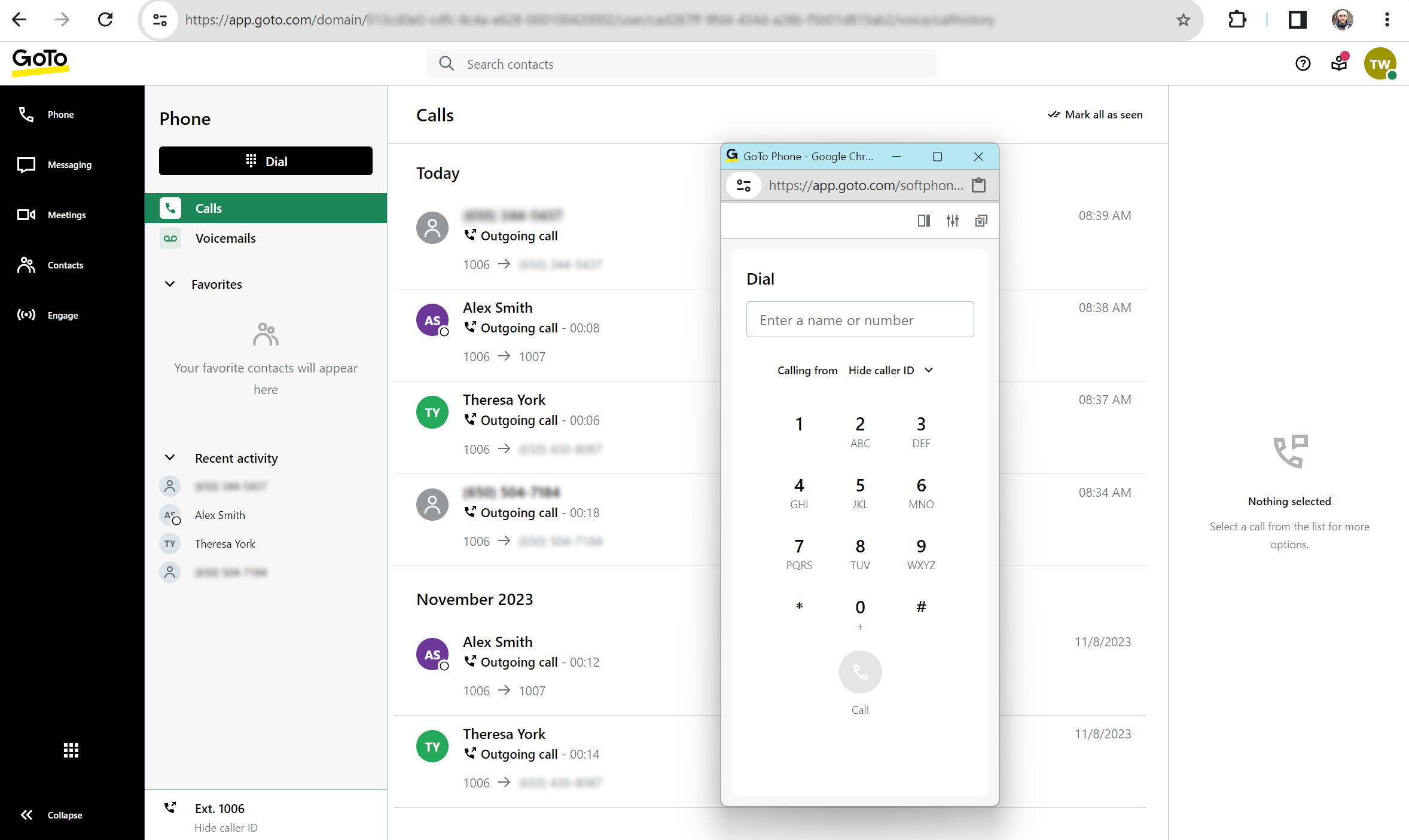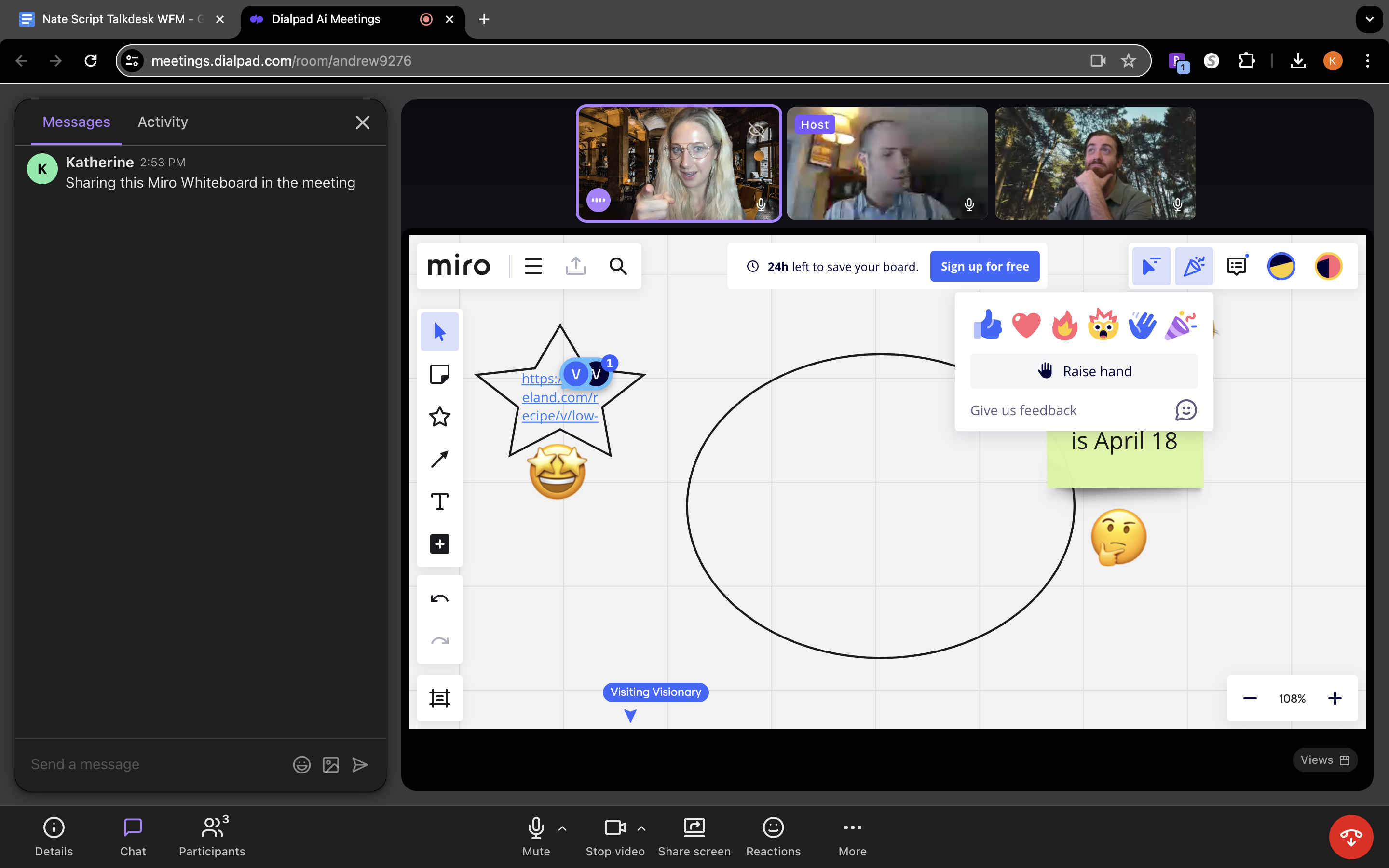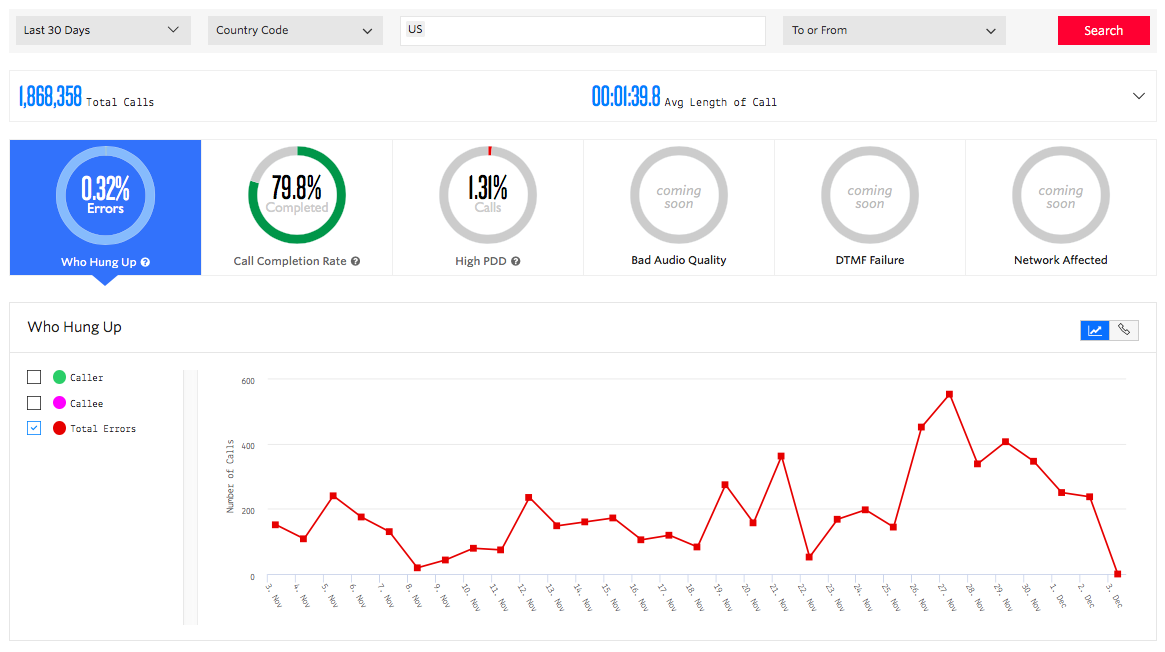UCaaS combines multiple business communication and collaboration tools into a single, unified platform, offering cost-effective scalability and flexibility. It combines VoIP, team chat, video conferencing, and SMS into one hosted platform, exemplifying why 82% of businesses report savings when moving to the cloud.
Read on to learn what a UCaaS system is and how it can benefit your business.
- What is UCaaS?
- How Does UCaaS Work?
- UCaaS Features
- UCaaS Benefits
- UCaaS Challenges
- How to Choose a Provider
- How UCaaS Uses AI
- How to Migrate
- FAQs
What is UCaaS?
Unified Communications as a Service (UCaaS) is a cloud-based business communication solution that integrates VoIP calling, SMS texting, team chat, and video conferencing into a single cloud-based platform. By consolidating these different channels, UCaaS streamlines communication, boosts productivity, and cuts the need for on-premises infrastructure. Its cloud-hosted attributes make updates seamless and security robust while retaining high availability.
One key advantage of UCaaS is how easy it is to scale, making it suitable for businesses of all sizes. Whether it's supporting a small remote team or a large, mutli-location enterprise, UCaaS can adapt without needing large hardware investments. Centralized management keeps IT administrators looped in through one single dashboard, simplifying oversight into call routing, voicemail, user permissions, and more.
UCaaS even enhances accessibility, making it so employees can connect using mobile or desktop apps from anywhere so long as they have an internet connection. Features like call forwarding, mobile apps, and voicemail in the cloud ensure remote and hybrid work configurations work and communication across devices is seamless. By offering a flexible and cost-effective comprehensive communication platform, UCaaS is enabling businesses to thrive in today’s modern and digital-first environment.
How Does UCaaS Work?
UCaaS works through integration and consolidation of multiple communication channels like VoIP calling, SMS texting, team messaging and video conferencing. This becomes one single, cloud-hosted platform accessible through desktop and mobile. Unlike the traditional phone systems that rely on physical PBX hardware, UCaaS operates 100% through the internet to give businesses the ability to communicate anywhere they have a connection. Users can manage their tools through one dashboard, make and receive VoIP calls, send messages, and log in to video meetings without needing phone lines or infrastructure. VoIP phones are optional.
When an organization takes on UCaaS, the administrator sets up an account, adds users, and assigns virtual phone numbers from across the country and globe, allowing employees to instantly make and receive calls. Since UCaaS platforms use softphone functionality, users do not need to be tethered to a desk phone–they can use their tablets, smartphone, computers, anything that interfaces with VoIP. Messaging and video conferencing are a part of the platform, allowing real-time communication via one-on-one chats, group discussion or virtual town halls with hundreds of participants.
Compared to traditional PBX systems, UCaaS offers more flexibility, savings, and scalability. On-premises PVX set ups require expensive hardware, complex installation, and recurring maintenance that all adds up over time. Businesses can add and remove users on the fly, integrate with CRM and productivity tools, and even use AI-powered features like automatic call routing, sentiment analysis, and instant transcriptions.
Essential UCaaS Features
The most essential UCaaS features are VoIP calling, SMS texting, team chat, video conferencing, voicemail, routing and IVR menus, and call queues.
Here’s a breakdown of essential UCaaS features:
- VoIP calling
- Call routing and IVR
- Ring groups
- Video conferencing
- Team chat messaging
- Reporting and analytics
- Third-party integrations
VoIP Calling
VoIP (Voice over Internet Protocol) telephony lets users make unlimited calls within the United States and Canada via the Internet, with call controls like hold, transfer, forward, and call parking. Choose local, toll-free, vanity, and even international phone numbers.

Call Routing and IVR
Call routing features determine how your phone system handles and transfers inbound calls. Create an interactive voice response (IVR) menu that plays an automated message for customers, letting them choose which department they’d like to reach. Customize each menu option, attach forwarding rules and business hours, and link departments and ring groups to customize call handling.
Ring Groups
Ring groups are a call routing feature that lets you create agent groups that share call responsibility. When one employee receives a call, so do the other numbers in the ring group. Customize the ring order with options like simultaneous ring, sequential, round robin, or a custom order.
Video Conferencing
Create video meetings that last up to 24 hours, with hundreds of participants. Create and schedule meetings directly within the UCaaS dashboard, and generate invite links which you can send to teammates or external users. Sync calendars for an organized schedule.
Video meetings include interactive features like chat, screen sharing, virtual backgrounds, breakout rooms, waiting rooms, and whiteboards.

Team Chat Messaging
Team messaging enables real-time chat via one-on-one direct messaging and large-group channels. The UCaaS dashboard menu displays your active and recent conversations, with notifications for all new activity.
Within each chat, you can share files, react with emojis, and jump into a video huddle with one click.

Reporting and Analytics
Access reports and call logs for all agents, plus advanced analytics that track metrics like call volume and staff activity across all channels. View this data over custom timeframes, sorting it by user or department. The Analytics dashboard organizes the data in various displays like tables, graphs, and statistics.

Third-Party Integrations
UCaaS platforms integrate with dozens of popular software platforms like CRM systems, collaboration apps, databases, and calendar software. Sync data from apps like Salesforce and HubSpot to populate in-depth customer profiles. Link team messaging with Slack or Google Drive.
UCaaS Benefits
UCaaS platforms are a cost-effective way to improve team collaboration. They’re easy to set up, scalable, and support a remote workforce. Unified communications also provides advanced features that you wouldn’t find through alternative communication setups.
- Better customer service: UCaaS combines multiple communication channels, including voice, SMS, and video. These channels enable new customer-facing touchpoints, with self-service options like IVR for customer convenience. IVR allows customers to navigate menus to find answers to common inquiries without needing to speak to an agent, cutting wait times and freeing up your agents. IVR’s first call resolution rates are the highest of any contact channel.[*] AI-powered analytics can monitor sentiment and improve customer interactions to be more proactive. For example, a retail company can provide instant order status updates through automated SMS, while a healthcare provider can offer virtual consultations via video conferencing
- Improved team collaboration: Team chat and video meetings enable quick and interactive team collaboration, accessible on desktop or mobile. UCaaS achieves this by integrating chat, file sharing, and video conferencing all into one easy place. 97% of organizations have signaled interest in adopting or expanding UCaaS as remote and hybrid work grows globally.[*] For example, a marketing team working across multiple time zones can use persistent chat rooms to share updates on running campaigns instantaneously, while IT departments can troubleshoot remotely using video conferencing
- Cost-effective: Averaging roughly $25 monthly per user, UCaaS platforms provide a low-cost way to expand your company’s communication system. Traditional phone systems require heavy investiture in maintenance, hardware, and carrier fees. UCaaS even offers advanced features like call recording, analytics, and AI-assisted transcription–all services that would be expensive if purchased a la carte. Startups in particular should look to UCaaS as cost savings could easily be reinvested into marketing and product development
- Scalable: UCaaS platforms inherently account for business growth as adding or removing users is as simple as buying a subscription and assigning a virtual phone number within minutes. Gone are the days of complex installation or needing to upgrade hardware. Whether your company is expanding internationally or going through seasonal changes in staffing, UCaaS accommodates you. For example, a retail company can quickly add seasonal customer service agents, while a big international law firm can establish local phone numbers to gain presence in newer service areas
- Supports remote and hybrid work: 27% of the modern workforce works a hybrid schedule while 11% are fully remote, and those numbers are expected to increase.[*] UCaaS gives employees a fully operational communication platform that fits their needs and works from anywhere. Users can make and receive calls using virtual phone numbers based in different countries, ensuring they stay connected out of the office. For example, a sales rep can take client calls as they travel, supporting work-life balance by allowing employees to separate business and personal communications through virtual numbers.
- Advanced features: UCaaS platforms bundle high-value features like IVR, call queueing, voicemail transcription and call monitoring together at a fraction of the cost of buying them separately. These features work in tandem to automate workflows and boost your operation’s productivity. Call monitoring and coaching tools allow management to listen on live calls and provide real-time feedback to support agents. A legal firm can use call recording for documentation and compliance.
UCaaS Challenges
While UCaaS offers many benefits, it poses a few challenges as well. UCaaS may lead companies to pay for features that they won’t use, and these features may have a steep learning curve for some users. Unified communications also lacks channel flexibility, and it requires an internet connection for functionality.
- Requires strong internet connection: UCaaS apps, especially video meetings and VoIP calls, require sufficient bandwidth. Teams using UCaaS must maintain a stable internet connection.
- Unnecessary features: Since each UCaaS platform includes dozens of features, you will likely end up paying for some features that you don’t use. While the UCaaS cost may still be worth it, consider choosing a low-cost pricing tier for a better value.
- No customization: While contact centers and API-based communication systems enable you to customize your user dashboard, UCaaS comes in a premade app with few customization options
- Steep learning curve: It may take users several weeks to become familiar with the UCaaS features, channels, and interface
- Lacks channel flexibility: API-based communication systems like CPaaS let you pick your communication channels, including options like email, live chat, and chatbots. UCaaS does not offer these channels, which limits the ways you can connect with customers.
How to Choose a UCaaS Provider
When choosing a UCaaS system for your company, consider the features, channel offerings, and dashboard. Compare pricing plans for your favorite providers, looking for a system that offers the best value while meeting your budget.
Use the following tips to choose the best UCaaS provider for your company:
- Compare channel offerings: Compare the channels that each provider offers on their respective plans. Determine which channels you truly want, and only opt for a UCaaS platform that includes those channels.
- Determine your routing needs: Consider your company’s inbound and outbound call volume to determine which routing features you need. If you have many departments, you may want a product with call queues; and if you want to offer customer self-service be sure to choose a product with an IVR menu.
- Evaluate pricing models and cost: UCaaS providers offer different pricing models, though typically on a per-user, per-month basis. Plans can range from basic VoIP services to wholescale enterprise solutions, so it’s key to determine which features you need while keeping track of your budget. Flat-rate pricing sees fixed monthly fees per user with unlimited calling or messaging while usage-based pricing has you pay only for minutes and messages used. Additional costs like setup fees, new hardware, and charges for premium features like international calling or AI-powered analytics should always be factored in.
- Use free trials and tutorials: Before subscribing to a UCaaS provider, use the product’s free trial to get a feel for the interface. Many products also offer demos on their website, which offers a useful resource for determining user experience.
- Check out the integration offerings: Each UCaaS product includes a unique offering of third-party integrations. Before choosing a UCaaS system, compare each provider’s integrations, to see which ones connect with the software systems you already use.
- Assess reliability and uptime guarantees: UCaaS providers rely on cloud infrastructure, so reliability is something to look at. Look for providers who have carrier-grade, five nines uptime guarantees within their Service Level Agreements (SLAs) for minimal downtime and disruptions. Additionally, redundancy features like geographically distributed data centers and failover systems can protect you from the fall out of outages.
How UCaaS Integrates AI
UCaaS providers have begun implementing AI to streamline and automate functions like video-meeting summaries, customer support, agent support, task and call routing, lead qualification, and response suggestions for live agents. These features help companies remain competitive, as 80% of customer support organizations are anticipated to use AI by 2025.
Here are some of the ways UCaaS integrates AI:
- Video conferencing: Platforms like Dialpad and RingCentral use AI to provide live video-meeting captions, translate these captions into different languages, extract to-do items for participants, and generate post-meeting summaries
- Team messaging: Software like Zoom and Quo (formerly OpenPhone) use AI to summarize lengthy messages from teammates and generate auto responses
- Call transcription: Some UCaaS platforms use AI to transcribe calls, logging each transcription with the recording in the call log
- Real-time agent guidance: AI can provide agents with real-time canned responses and suggested actions
- Analytics: UCaaS systems use AI to identify trends and KPIs for agent performance, sales success, and customer service. Natural language understanding can identify customer sentiment, ticket resolution status, and the customer’s lead status.
How to Migrate to UCaaS
Migration towards UCaaS requires careful planning to guarantee a smooth transition that doesn’t disrupt your operation and its service standards. Once you have chosen a provider, you need to evaluate your current infrastructure, configure network settings, train employees, and conduct thorough testing before deploying services. We have a step-by-step guide below to help you successfully migrate to UCaaS:
Develop a Migration Plan
A successful migration plan makes your transition to UCaaS seamless. Start by defining your project’s scope, timeline, and the key stakeholders (like IT teams, department leads, and end users). Deciding which communications features are important and setting clear objectives, like improving remote collaboration or just cutting costs, is key. Will you migrate in phases (starting at one department before going company-wide) or do a full transition at once? Having a roadmap helps keep your expectations in line.
Audit Current Communication Infrastructure
Before implementing UCaaS, you need to do a comprehensive audit of your current communication system. Check all current phone systems, messaging platforms, and conferencing tools to see what exactly needs to be phased out, replaced, or integrated. What hardware dependences (desk phones, routers, headsets, etc.) are compatible with your new UCaaS system. You might need to do upgrades and replacements for those that are not.
Set Up Network and Bandwidth Requirements
UCaaS relies on internet connectivity, so you should look into a strong and stable network if you do not have one already. Bandwidth capacity needs to match expected VoIP call volume, video conference usage, and concurrent connectivity requirements. Your IT team and UCaaS provider can work together to prioritize VoiP traffic via Quality of Service (QoS) settings, which stop calls from dropping and other latency issues. You may still need to upgrade your internet connection or deploy redundant connections to guarantee uninterrupted service.
User Training and Adoption Strategy
Successfully adopting UCaaS depends on how well employees are trained to utilize the new system. Be sure to conduct hands-on training sessions, create user guides, and open up resources for support. You may have a few champions within departments who can assist colleagues having reservations or common issues. Early adoption can be pushed by showing off features that improve workflows like mobile apps, team messaging, and voicemail transcription.
Test and Troubleshoot
Before you go live, conduct a pilot test with a small set of users to see where potential issues may come up. Call quality, video conferencing performance, integrations with CRM and collaboration tools, and mobile access should all be tested. If possible, simulate real world situations like high call volumes or switching between devices to ensure your system is stable and ready for primetime. Work with your UCaaS provider to iron out connectivity issues before system-wide rollouts.
Go Live and Monitor Performance
Once testing is complete, it is time to deploy. You need to monitor system performance closely during your first few weeks, keep an eye on call quality, uptime, and user feedback. UCaaS analytics can measure adoption rates and even show you common issues. IT teams need to be prepared to provide ongoing support and regularly check in with employees to proactively address concerts and refine your usage strategy. Over time, you can optimize your UCaaS setup by adding features, integrating newer tools, and adjusting policies based on your business needs and growth.
FAQs
Below, we’ve answered the top UCaaS FAQs.



